Artist in Residence Program
2014 Resident Artist
- Seyit Battal Kurt(The Netherlands)
- Florencia Rodríguez Giles (Argentina)
- Constantinos Taliotis(Cyprus)
ARCUS Project’s Artist-in-Residence Program received 640 applications from abroad (78 countries and regions). Following a careful screening process, Seyit Battal Kurt (The Netherlands), Florencia Rodríguez Giles (Argentina) and Constantinos Taliotis (Cyprus) have been selected as the 2019 residents. The artists will participate in a residency at ARCUS Studio in Moriya, Ibaraki, for 100 days from August 26 to December 3, 2014.
As the judges for this year’s applications, we welcomed Nishikawa Mihoko, a curator at Museum of Contemporary Art Tokyo as our guest curator, Abdellah Karroum, a director of Mathaf: Arab Museum of Modern Art, and Nanjo Fumio, ARCUS Project adviser and a director of Mori Art Museum who made the selection through a process of discussion with the ARCUS Project Administration Committee.
Seyit Battal Kurt
The Netherlands

Born in Agri, Turkey in 1978. Lives and works in Dordrecht, Netherlands. Seyit Battal Kurt in 2005 obtained his B.A. from the Sculpture Department, Royal Academy of Art in the Hague, Netherlands. In 2010, he completed the master course at Sandberg Institute, Amsterdam, Netherlands. He has taken part in numerous exhibitions including the ‘Now&After’14 International Video Art Festival (Moscow, 2014), the 2nd International Mardin Biennial (Turkey, 2012), the World Expo Shanghai (Shanghai, 2010), and the 53rd Venice Biennale (Italy, 2009). His international activities include a residency at the Gyeonggi Creation Center (South Korea, 2012). He has also undertaken numerous talks and lectures. His work is an investigation into the movement of people in global society and subsequent problems of identity, the relationship between people and nature, and food culture. He creates artworks on these themes using film and video. They include a video created from research in the village of his birth, where people are moving away, having lost their former way of life, and a video installation concerning Korean food culture.
Selected Works

Shooting at Asano Farm

Shooting packaging of vegetables at Asano Farm

Documentation of plowing (Nishio Sachiyo’s farm)

Documentation of plowing (Nishio Sachiyo’s farm)
Open Studio

Man and Earth
7-channel video installation

Still from Man and Earth

Artist Statement
I want to make sound and video recordings of different aspects of the landscape, the nature around Moriya and take some interviews with elderly farmers from Moriya about their perspective on life, history and farming in general. Finally I want to combine these recordings with fantasist elements and objects from the nature, religion and mythology, to create a video installation.
Reason for Selection
The video this artist created from research in the Kurdish village of his birth shows people in a matter-of-fact way, whether a mother baking bread or villagers assisting the birth of livestock. When small, the artist accompanied his father when he left the village to work overseas, and he subsequently spent his youth in the Netherlands. Born in the village, he is both an insider and an outsider there. The artist’s perspective in this video, while warm and quiet, is yet penetrating in its scrutiny—an aspect I found strongly appealing. Today, when changes in industrial structure and expanded distribution are affecting the world’s food culture, I feel curious to see how he will look at Japan’s food culture, which is becoming increasingly homogenized. (Guest curator, Nishikawa Mihoko)
Florencia Rodríguez Giles
Argentina

Born in Buenos Aires, Argentina in 1978. Lives and works in Buenos Aires. In 2002, Florencia Rodriguez Giles obtained her M.A. in painting at the National University Institute of the Arts, Buenos Aires. From 2010 to ’12, she studied Analysis and Development of Projects in Visual Arts under a scholarship at Universidad Torcuato Di Tella, Buenos Aires. Her major exhibitions include “Círculos en movimiento” (MAMBA Museum of Modern Art of Buenos Aires, Argentina, 2013) and “Il va se passer quelque chose” (Maison de l’Amérique Latine, Paris, 2012). Her activities in Japan include participation in the Backers Foundation and AIT Residence Program (2009) and “HOME AGAIN -10 Artists who have experienced Japan” at Hara Museum of Contemporary Art (2012). Her artworks employ a fusion of media, including painting, installation, performance, photography, and video. Through dreams and illusions, she explores the meaning possessed by ritualistic and religious customs in society. She currently is working worldwide while based in Latin America.
Selected Works
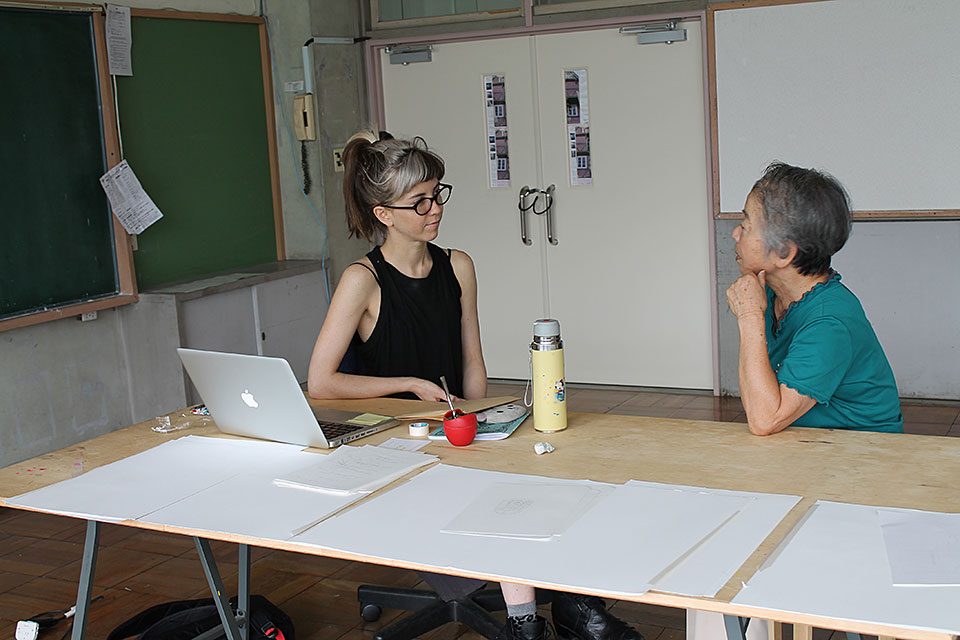
Meeting with prospective participants in the project

Drawing for Interzone

Facility tour at the production site of Yūki-tsumugi
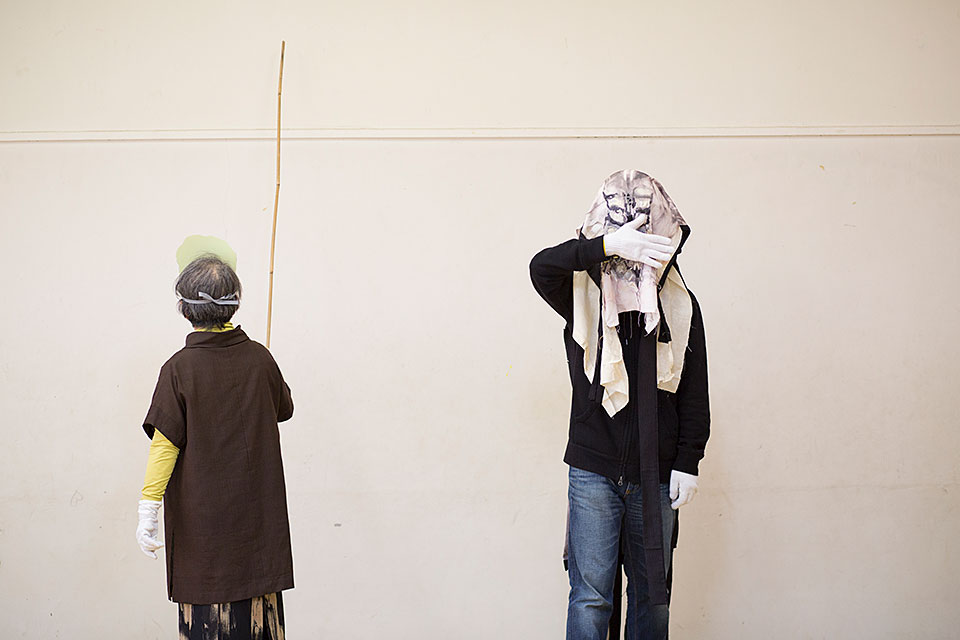
Practice at Open Studios
Open Studio

Interzone
Performance

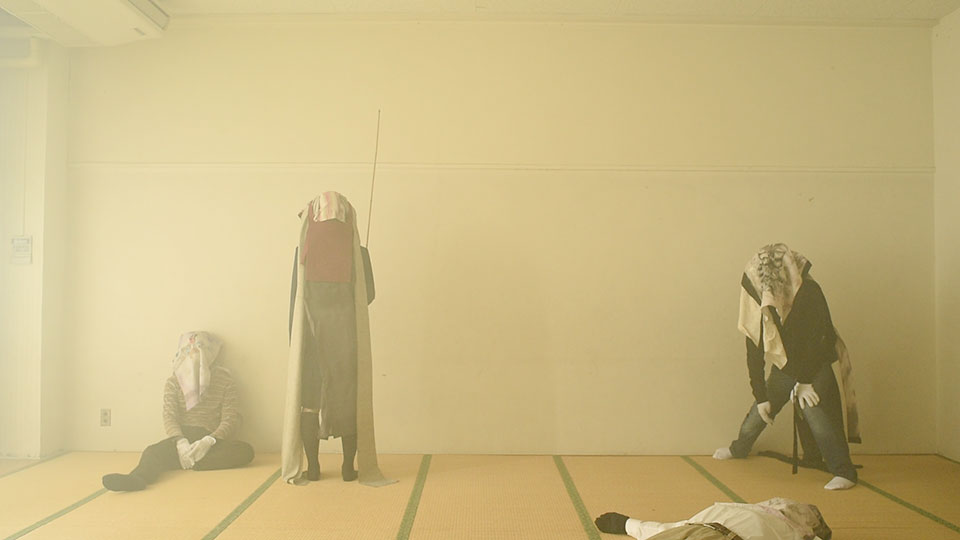
Artist Statement
The project I want to develop in Moriya is based on the idea that the act of dreaming can be used as a source of new narratives and collective practices. Dreams constitute an essential dimension of the daily life of every human being. However, such a dimension is usually restricted to a private and intimate sphere of human existence which is radically separated from the narratives and practices that organize the intersubjective relations of the states of wakefulness. This project aims to bring the individual experience of dreaming to a collective context in order to use it as a fabric of other possible narratives.
Reason for Selection
This artist gives unique, comprehensive development to dream paintings, performances, and stage set designs. Her drawings and the stage costumes she creates display a powerful creativity. During her last visit to Japan, she absorbed Japan’s traditional culture during a collaboration with a Butoh master and other activities, and later reflected her experiences in artworks. With a deeper understanding of Japan, there is a strong possibility she will take this endeavor even farther. Through her involvement in Arcus, she hopes to experience broad exchange with local people and gather fragments of dreams. We can look forward to her discoveries of a culture unconsciously shared by people in a group. (Guest curator, Nishikawa Mihoko)
Constantinos Taliotis
Cyprus
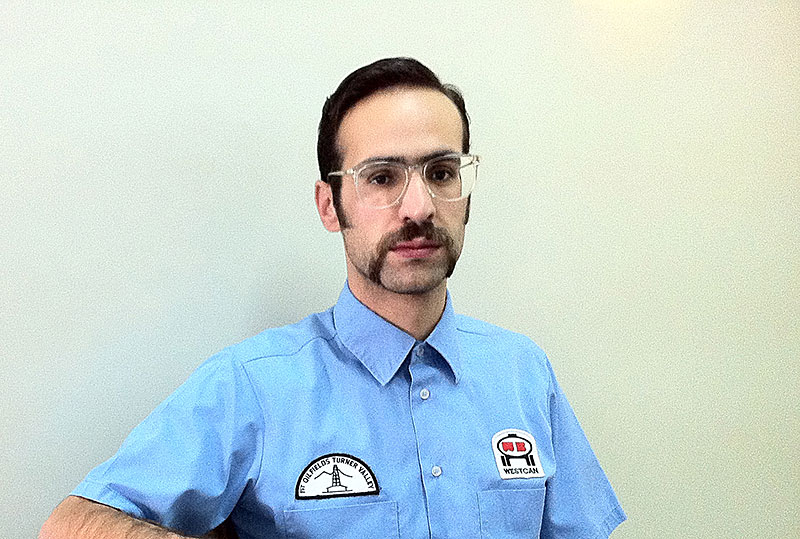
Born in Nicosia, Cyprus in 1983.
In 2006, Constantinos Taliotis graduated from Chelsea College of Art & Design in London. In 2008, he received an M.A. in Philosophy and Contemporary Critical Theory at Middlesex University. His major exhibitions include participation in the 55th Venice Biennale, The Cyprus Pavilion (Italy, 2013), 50 YEARS OF JAMES BOND AGAINST ARCHITECTURE (Pilot Gallery, Istanbul, 2013), and AFTERMATH (Akbank Art Centre, Istanbul, 2012). His participation in residency programs includes the ISCP (New York) in 2014 and KÜNSTLERHAUS BETHANIEN (Berlin) in 2012. Embarking from research into modern architecture and movies, he composes new narratives using wide-ranging methods, including photography, video, installation, and writing and editing texts. He also undertakes stage design and artistic direction.
Selected Works

Warp Station Edo shot by the artist
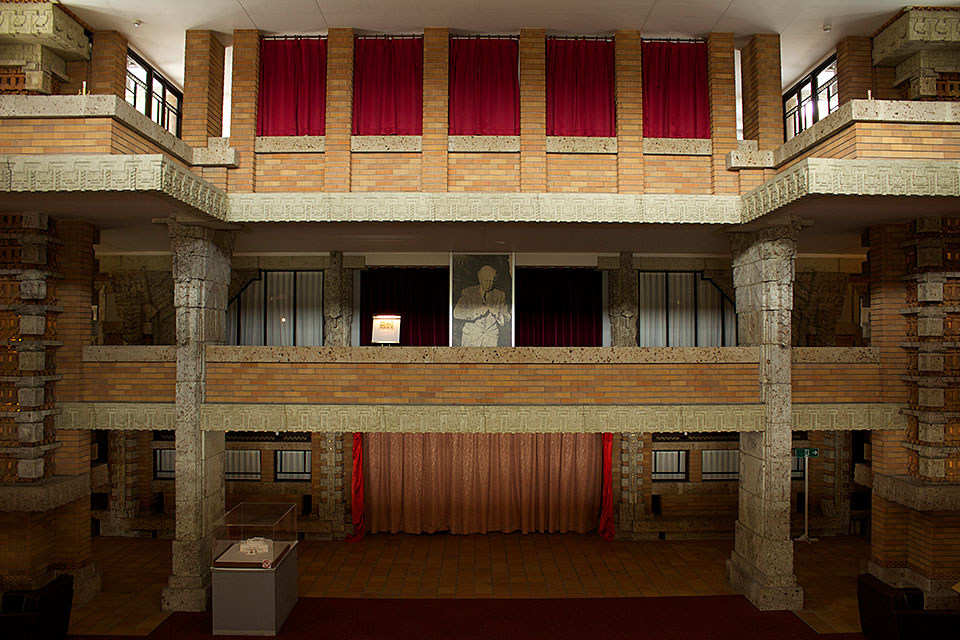
The Imperial Hotel at the Museum Meiji-mura shot by the artist

Studies of house for pavilion/exhibition
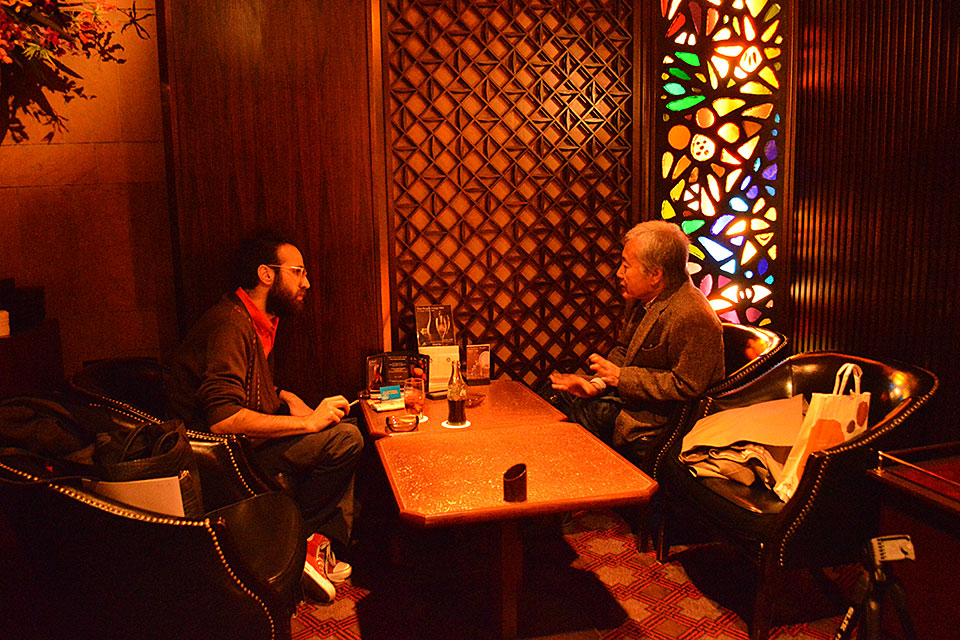
Interview with Tokunaga Katsuhiko at Orchid Bar of Hotel Okura Tokyo before its demolition
Open Studio
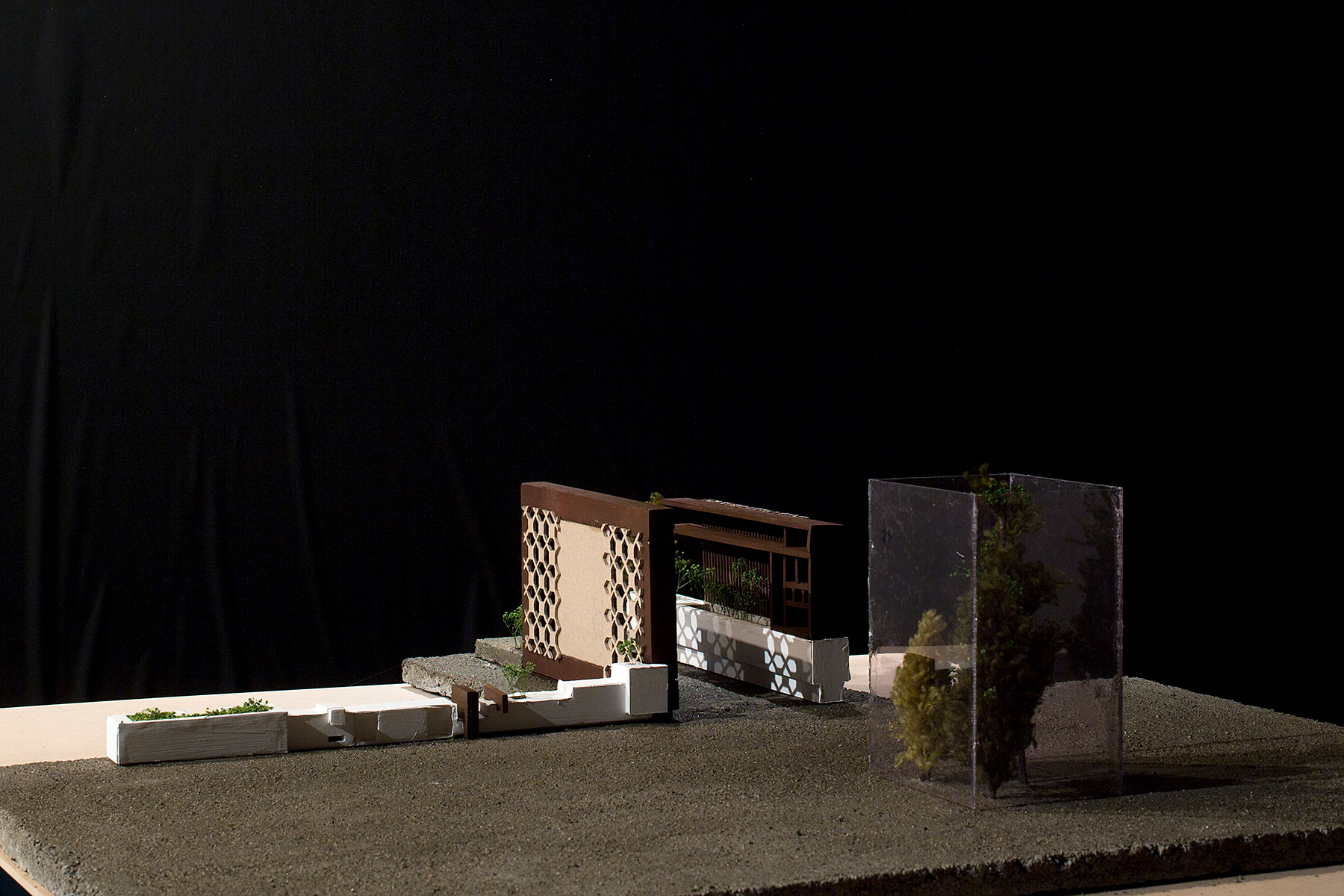
Frank
Plan, Drawings, CG animation, Model
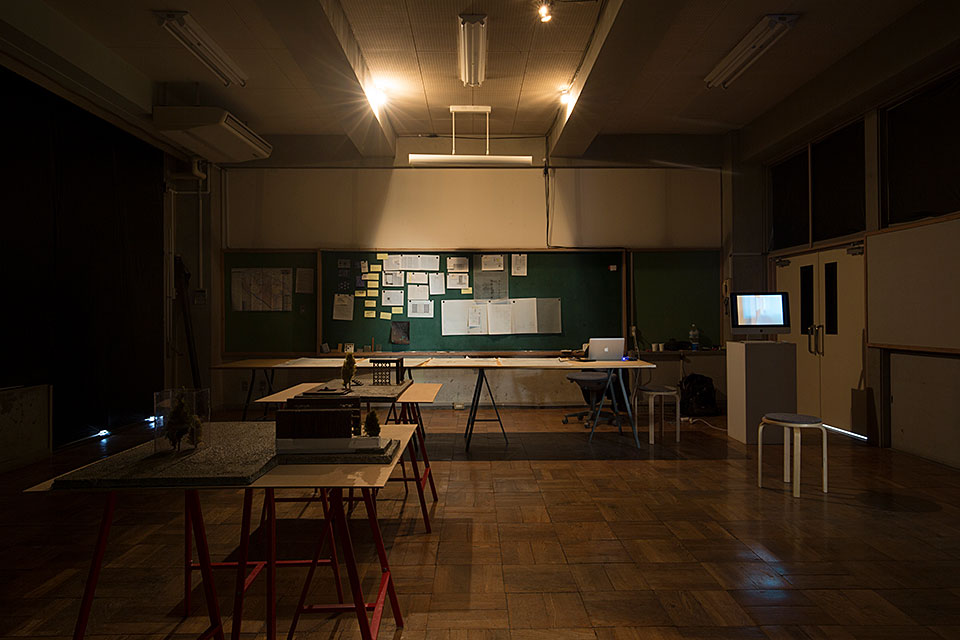

Artist Statement
My research evolves around episodes from the history of modernist architecture in Japan, its epidemics and its failures. Additionally, I am interested in the glossary of subcultures of speed and danger. During the 100-day residency at ARCUS I intent to engage with these kinds of conundrums; in other words, questions of velocity and stasis.
Reason for Selection
Photographic works portending fear and violence that recall a scene from a B-grade movie. An installation of a model house that, while perfect in every way, somehow makes us uneasy . . . The artist’s works strike a deep impression that makes them hard to forget. From his use of architecture, movies, and other monumental elements symbolic of the 20th century, we can sense his deep insight into contemporary society. This time he would like to investigate destruction and speed, taking cars as a motif. We can feel certain a global theme will take form. (Guest curator, Nishikawa Mihoko)